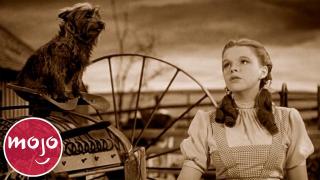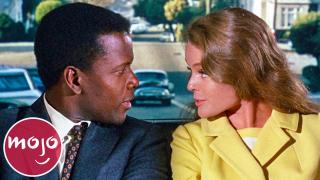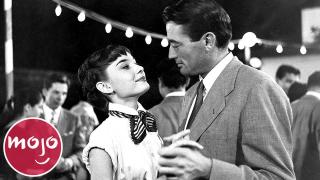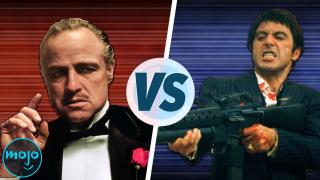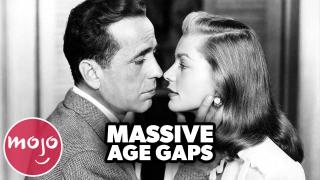Top 10 Classic Hollywood Movies That Were Controversial Upon Release
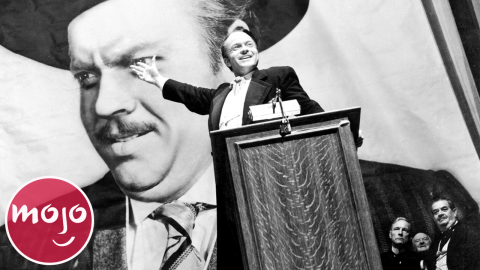
#10: “The Outlaw” (1943)
Top 10 Memorable Musical Numbers from Classic Hollywood Movies
Director and Hollywood heavyweight Howard Hughes knew how to sell a movie. His 1943 western, “The Outlaw,” made its busty new ingénue, Jane Russell, the focus of its promotional campaign. While the actress became a sex symbol, the movie ran into censorship trouble because of Russell’s prominent bust as featured in the movie. Rather than shy away from the stink of controversy, Howard Hughes leaned into the scandal. To keep the movie from being banned outright, he actually began spreading the word that “The Outlaw” was a flagrant assault on American morality. As expected, audiences clamored for it.
#9: “Citizen Kane” (1941)
Without any cultural context, Orson Welles’ masterpiece probably doesn’t seem all that controversial to a modern audience. However, the megalomaniacal newspaper mogul at its center ran a little too close to the real life of newspaper mogul William Randolph Hearst. Enraged by the film even before its release, Hearst used his own newspaper and his influence within Hollywood to effectively shadow-ban the film. He also played into pre-World War II xenophobia and anti-semitism by threatening to expose the large number of German refugees and Jews working in Hollywood. Despite good reviews and later being hailed as a masterpiece, many of the artists associated with the film blamed Hearst’s underhanded tactics for its underperformance at the box office.
#8: “Midnight Cowboy” (1969)
For many cinephiles, this Best Picture winner was the death knell for Classic Hollywood movies as we knew it. “Midnight Cowboy” followed a kindly male sex worker and his conman friend as they navigated the seedy underworld of New York City. It broke all the previously established rules in its frank depiction of sex work and poverty. However, its depiction of homosexuality seems to be what the MPA took the most issue with. They slapped the movie with an X-rating, which might have killed its box office potential in the past. However, its success in theaters and at the 1970 Academy Awards showed that American viewing habits had outgrown the more restrictive confines of the Hays Production Code.
#7: “Bonnie and Clyde” (1967)
If “Midnight Cowboy” was the last nail in Old Hollywood’s coffin, “Bonnie and Clyde” was one of the first. This violent and darkly comic biopic of the notorious bank robbers signaled a shift in what could be shown on screen. Its main source of controversy was the graphic and callous depiction of violence. Film critics like Bosley Crowther launched public smear campaigns against the film and others like it. Warner Bros. seemed hesitant to market “Bonnie and Clyde” at all, opting to lose out on potential earnings than risk the outrage a wide release might bring. In spite of its detractors, the movie was saved by critics like Roger Ebert and Pauline Kael, who argued for its merits as a groundbreaking new American classic.
#6: “The Great Dictator” (1940)
Top 10 Classic Hollywood Movies That Properly Handled Serious Topics
Charles Chaplin’s satirical send-up of Adolf Hitler came at a particularly fraught moment in history. In 1940, America was still at peace with Germany, even as the Nazis began invading neighboring countries. Chaplin’s populist humor and leftist political leanings already made him a favorite villain of fascists like Hitler and Italy’s Mussolini. With “The Great Dictator,” he turned Hitler’s mannerisms and brutish evil into something worthy of ridicule. The film’s final speech is a rousing call against fascism, which was especially controversial due to many Americans’ non-interventionist beliefs regarding the growing unrest in Europe. Although the movie did very well with the public, Chaplin’s overt politics angered many and would make him the target of anti-communist sentiment for years to come.
#5: “The Man with the Golden Arm” (1955)
Top 10 Best Classic Hollywood Movies of All Time
Frank Sinatra was still building his legend when he took the role of a drug addict struggling to stay sober. Before “The Man with the Golden Arm” was even filmed, censors were all over the script, removing any explicit reference to drugs or the drug trade. Director Otto Preminger and United Artists actually released the film before it had a seal of approval from the Production Code Authority, a huge move against the long-followed Production Code. Fittingly, it was Preminger’s previous film, “The Moon Is Blue,” that was the first major American release to forgo a PCA seal of approval. Despite pushback, theater owners and distributors seemed to think “The Man with the Golden Arm” was too important to withhold from the public.
#4: “Scarface” (1932)
The Godfather vs Scarface: Who Was The Greatest Mob Boss?
Hollywood in the early 1930s was a wild west as far as graphic content was concerned, but “Scarface” was a bridge too far. This foundational gangster film is an endless onslaught of gunfire and unsavory behavior. It proved so controversial that it is cited as one of the movies responsible for the creation of the Production Code in 1934. Italian Americans across the country decried its portrayal of Italian immigrants, and censorship boards denied permits to exhibit it in certain states. Even after “Scarface” found some box office success despite being re-edited to appease censors and special interest groups, producer Howard Hughes pulled the film from distribution. It wouldn’t be widely available again until after his death in 1976.
#3: “Song of the South” (1946)
Every In the Heights Song: RANKED
Given the response to “Song of the South'' before and after it was made, there were plenty of people who knew it was wrongheaded from the start. Even in 1946, many audience members saw the movie’s regurgitation of racist stereotypes, blackface minstrelsy, and infantilizing caricatures of Black people for exactly what it was. The National Negro Congress organized picket lines outside of theaters that exhibited the film. Even white film critics who admired the movie’s technical brilliance found it hard not to comment on its retrograde racial politics. Though Disney re-released the movie theatrically several times, they have yet to release it on home video in the U.S. The movie still makes headlines for its presence, however small, in Disney merchandise and theme parks.
#2: “Freaks” (1932)
Tod Browning’s 1932 horror movie about performers in a carnival freakshow had very few fans. Some said it was exploitative of its stars, who were real sideshow performers with real physical disabilities. Many, though, were just repulsed by the movie, its characters, and the horrors visited on them and those who cross them. One woman at a test screening is rumored to have threatened a lawsuit against MGM for causing her miscarriage. Even after editing the movie down to just over an hour, MGM took a huge loss with the movie, which would go on to become a cult classic.
#1: “The Birth of a Nation” (1915)
Top 10 Things in Old Hollywood Movies That Wouldn't Work Today
Depending on who you talk to, D.W. Griffith’s 1915 epic is either the most despicable movie ever made or the first cinematic masterpiece. To many, it’s both. “The Birth of a Nation” is credited with popularizing, if not downright inventing techniques such as the dramatic close-up, crosscutting, and tracking shots. It’s also credited with reviving the Ku Klux Klan, which had been dormant for nearly fifty years when it was released. The movie, which valorizes the Klan and portrays its African-American characters (played by white actors in blackface) as unintelligent and violent, inspired protests, racist attacks, and an entire controversy surrounding President Woodrow Wilson’s reported admiration of the film. To this day, it remains a figure of heated debate in film circles.


